Hello and garden greetings to you from the ‘Garden at the Berkshires.’ This is a garden that I have created around my parent’s house on their farm. Previously to being a garden it was a paddock. In the last eight years or so, we have designed, prepared, planted and constructed the garden. In this time, I have been focusing on selecting plants that are tough, so now after eight years of gardening here I have decided to start a weekly post or column on my Instagram and Facebook business pages about tough plants.
Published online each Wednesday, I write about a plant from our garden here at “The Berkshires”. We are located about 15km north west of Young. ‘The Plant of the Moment’ column features plants that are looking outstanding at that moment in the season. The plant which could be a tree, shrub, grass, perennial or groundcover is tried and trusted to survive the drought conditions here through Summer and the frosts of Winter.
It will tick every box – pretty flowers and/or interesting foliage and a hardiness to all conditions. It will be a plant that I have planted out in other gardens, so I know how well it survives. These won’t be plants that only look good for a day or two a year or species that need lots of extra tender loving care. All plants will need water to get established and need good soil preparation prior to planting. The soil preparation is the key to all plants surviving well in any garden. These plants will be high value plants that make a contribution to the garden. I look forward to showcasing some beautiful plants for you. Hopefully, you find some species that you can use in your garden. Featured below I have the six species I have chosen over the past six weeks. To see each week’s plant of the moment, go to my Instagram or Facebook pages and follow me – Glenice Buck Designs. Also, to keep up to date with garden happenings, events, and news you can subscribe to my free garden newsletter subscribe by going to www.tinyletter.com/glenicebuckdesigns or email glenice@glenicebuckdesigns.com.au or phone or text me on 0417077386.
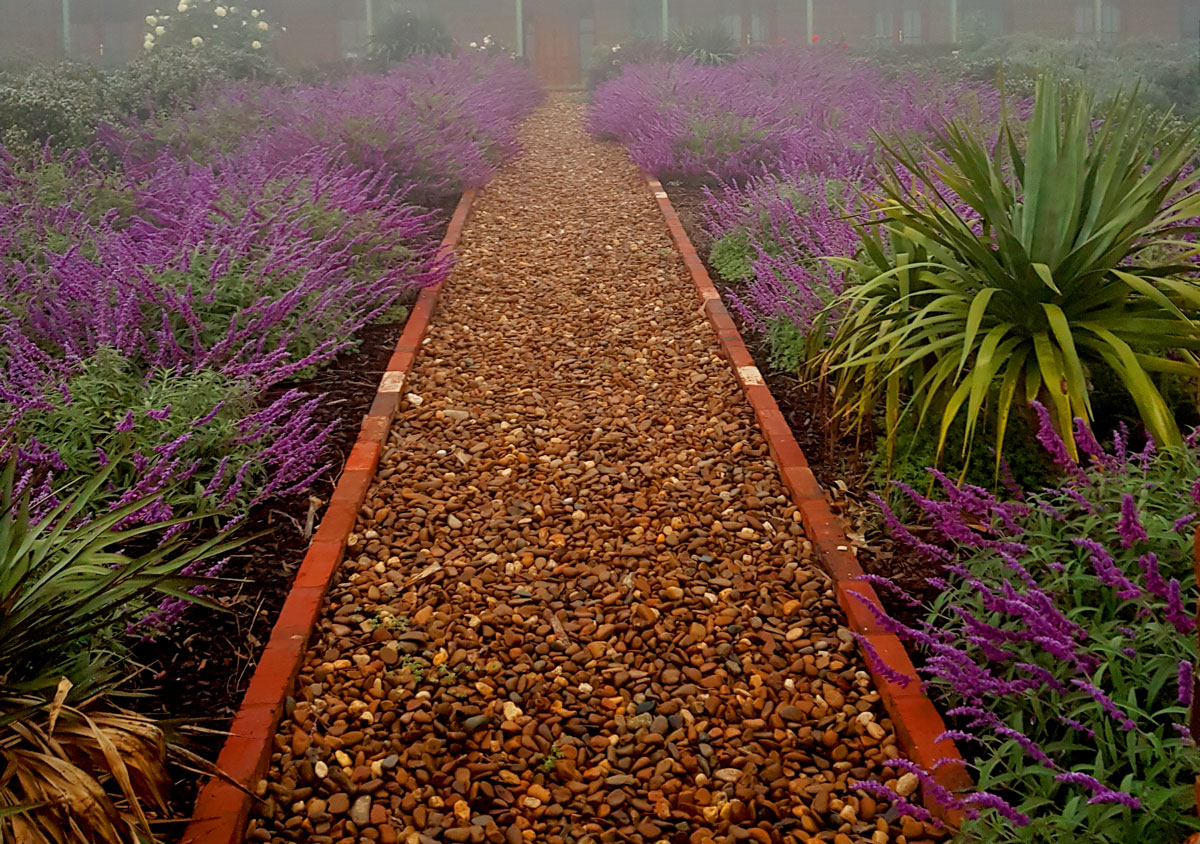 IMAGE: Salvia Santa Barbara
IMAGE: Salvia Santa Barbara
Salvia leucantha “Santa Barbara”
A smaller grower and more compact form from its parent plant Salvia leucantha (Mexican Sage). Its maximum size would be 1m x 1m. This is my favourite Salvia of all time.
Here in Young, it starts flowering late Summer and continues through to the beginning of Winter. It features prominently in the #thegardenattheberkshires as you can see in the first image, it is planted either side of the front pathway. It is also mass planted across our north facing slope with French Lavender and Rosemary. Its attributes are the lovely silvery green leaves, its bold pinky purple flowers, its drought and frost tolerance and its versatility to work well on the coast as well as inland regions.
Ours are normally cut back hard in August by which time its spring flush of growth is already shooting through.
They enjoy a well-drained soil, full sun and some supplementary watering on the hottest days in Summer.
 IMAGE: Zauschneria “Bowman’s” (Californian Hummingbird Trumpet flowers or Californian Fuchsia)
IMAGE: Zauschneria “Bowman’s” (Californian Hummingbird Trumpet flowers or Californian Fuchsia)
Zauschneria “Bowman’s” (Californian Hummingbird Trumpet flowers or Californian Fuchsia)
This low growing shrub or ground cover has a spreading habit with horizontal and some upright twiggy stems. It will reach approximately 40 – 45cm in height and spread at least 1 metre in width. The small narrow needle like leaves have a grey green colour with a slight tomentose. They produce orangey red flowers here #thegardenattheberkshires (in Young, NSW) from January/February through to June.
After flowering, I cut them down to ground level. They receive only the odd splash of water through the Summer. They like a full sun, well drained position. Bees adore the pollen.
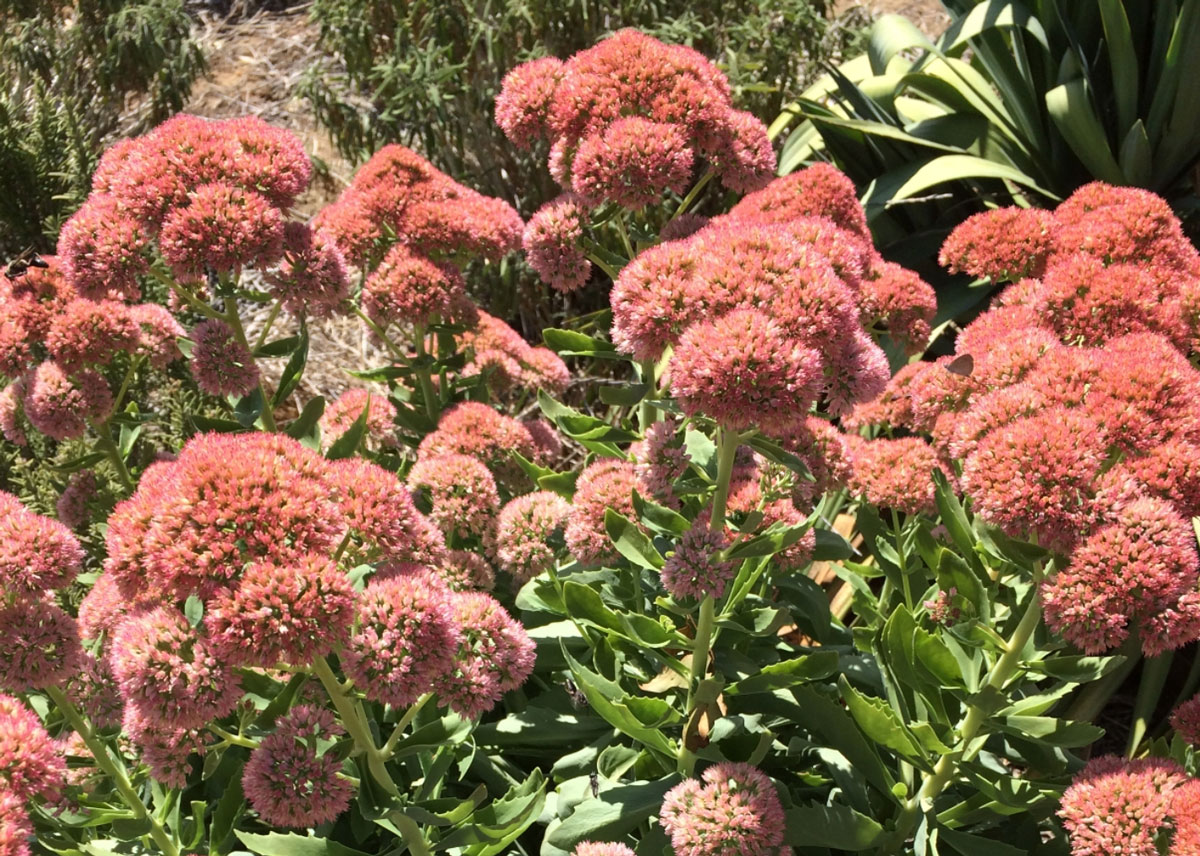 IMAGE: Sedum Autumn Joy
IMAGE: Sedum Autumn Joy
Sedum “Autumn Joy” And Sedum “Matrona”
I couldn’t pick between them, both gorgeous succulent leaved, flowering, herbaceous perennials. Here at #thegardenattheberkshires both start flowering late Summer/early Autumn. “Autumn Joy” has bright green foliage with green to cream buds opening to a bright pink before becoming even bolder and striking in colour to a coppery rusty red colour in mid-Autumn. It will reach approximately 60cm in height x 50cm in width.
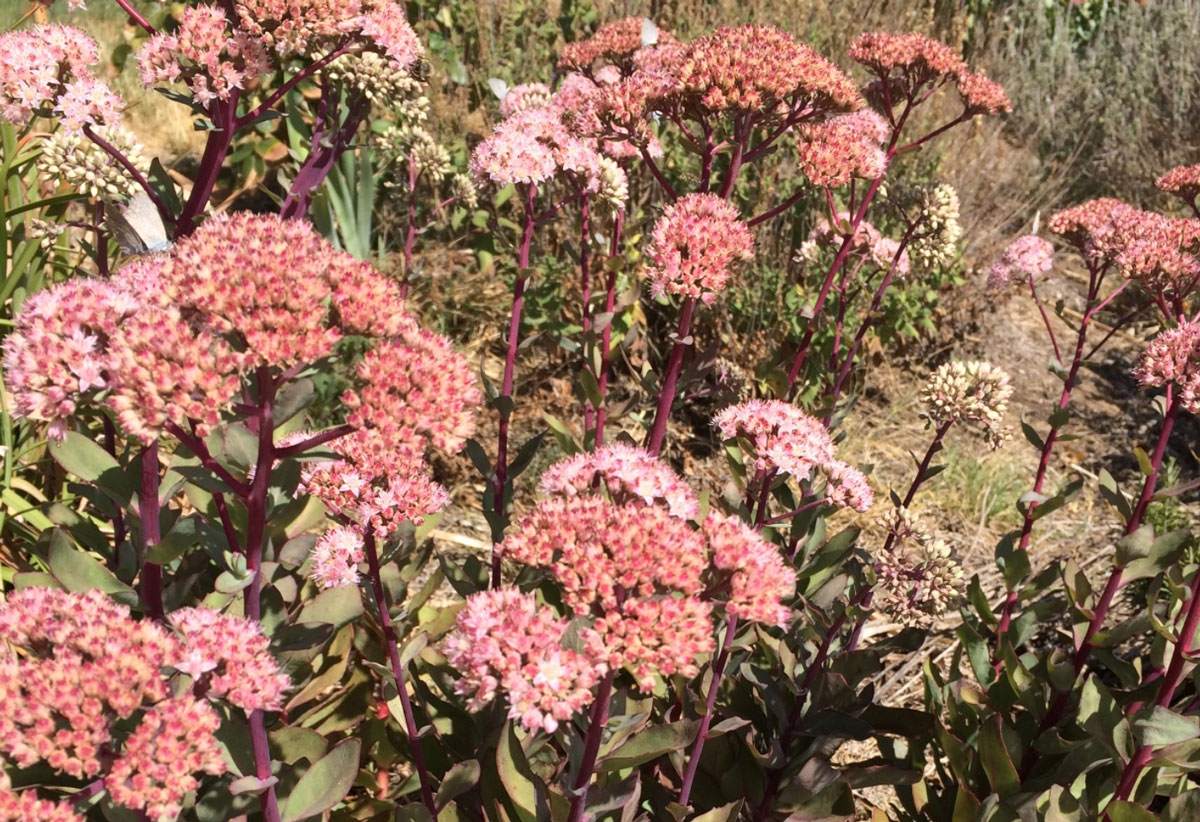 IMAGE: Sedum Matrona
IMAGE: Sedum Matrona
“Matrona” has green foliage with purple mottling throughout and red brown stems. Its flowers are a bright pink which age to a claret colour. It will grow slightly bigger than “Autumn Joy” overall with a maximum height of 70cm.
Both naturally form rounded mounds in the garden. Being herbaceous, they will die down in winter for a few months. Here in Young, they start reshooting by late August. Both are extremely hardy and drought tolerant.
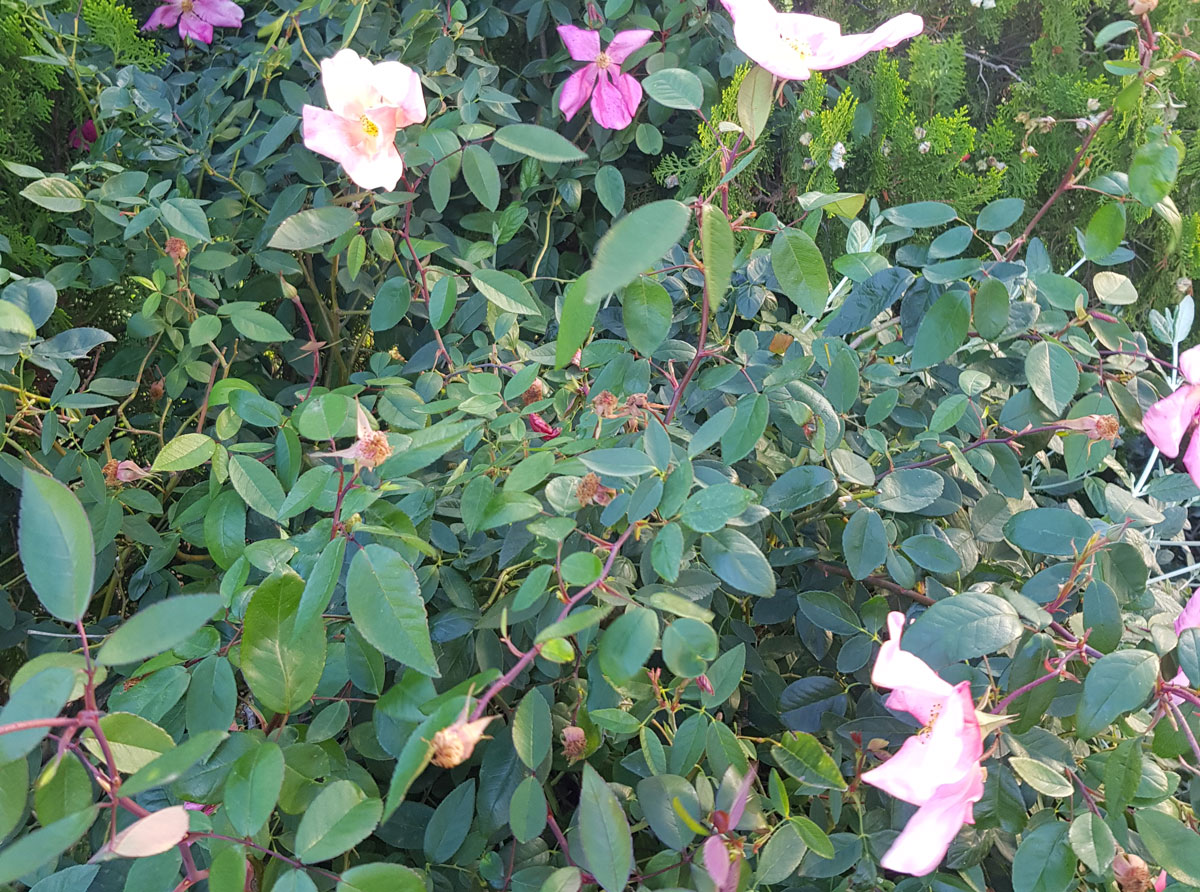 IMAGE: Rosa Mutabilis
IMAGE: Rosa Mutabilis
Rosa chinensis “Mutabilis”
A rose which is a bit different to the Hybrid Tea or Floribunda Bush Roses. This rose is a big growing, shrubby rose. It’s also known as the Butterfly Rose as its open flowers look like butterflies on the bush.
Here at #thegardenattheberkshires, it starts flowering in late Summer and continues flowering through to mid-Winter. It then starts flowering again in Spring with almost continuous spot flowering to late Summer again.
Flowers change colour as they age, hence the name mutabilis which, in Latin, means ‘changeable’. The buds are orange/pink opening to an apricot colour. They then turn to a coppery pink and then a watermelon pink.
The flowers are single flowers which are quite open. The changing colour is quite beautiful to watch as at any one time there will be a variety of colours on the one plant. It has a soft spicy fragrance. Another feature is, if you leave the flower buds to die, they will form bright red rose hips.
It has the potential to grow to about 2 metres in height and width. It is a very open, rangy plant that does need to be given space to grow. I have only ever seen it used as a shrubby bush but apparently it can be trained as a climber. It works well in a mixed border or you could even use it as an informal hedge.
It is not a rose that needs a hard cut back each year. I usually regularly trim back the dead flowers and then I only do a formative prune to shape once or twice a year. Even with frost, it never seems to lose all of its foliage here in Young. Best in a full sun, north facing position with well drained but highly organic soil.
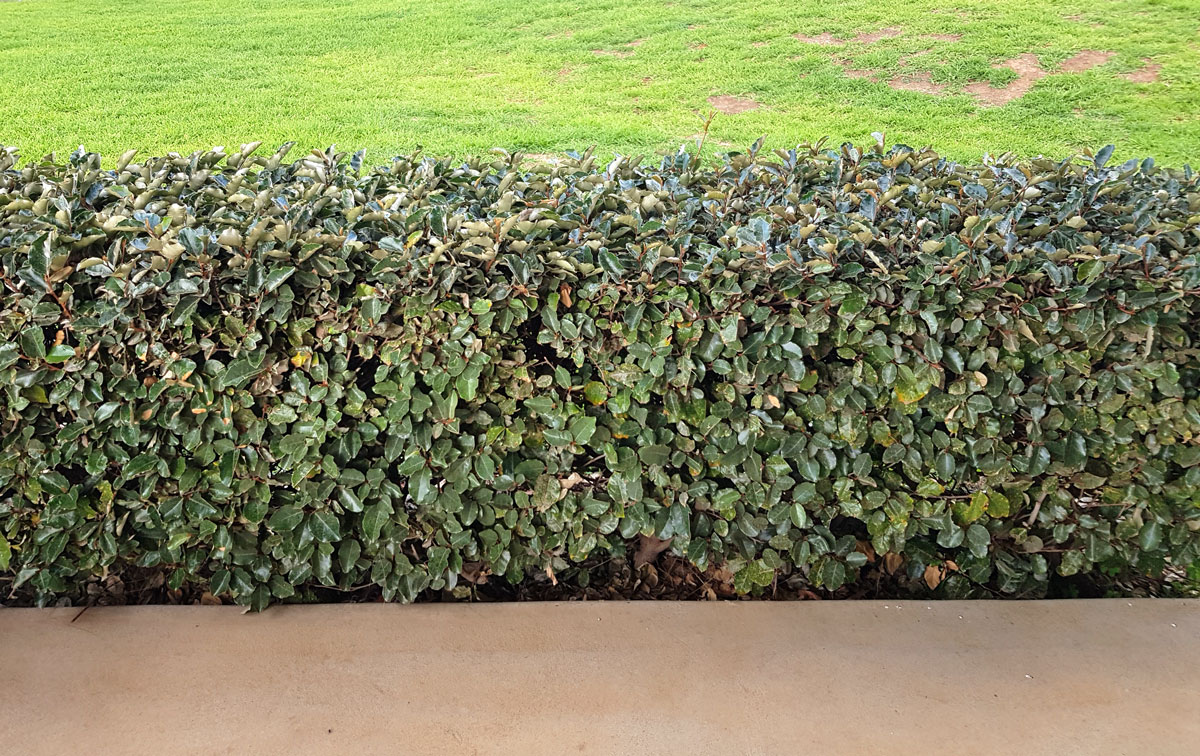 IMAGE: Elaeagnus Macrophylla
IMAGE: Elaeagnus Macrophylla
Elaeagnus macrophylla
An evergreen shrub that can reach 3 metres in height x 3 metres wide but can be kept at about 1 metre x 1 metre in size. A versatile shrub that can be pruned as a hedge or as rounded balls. If left to grow to its natural shape, it would have an open habit with horizontal branching. Ideally it does need some pruning.
Here at #thegardenattheberkshires, we have it growing as a hedge and as a rounded ball like mass planting.
Mainly grown for its lovely green foliage with silver undersides to the leaves. Also a feature are the brown stems and leaf buds. It has tiny flowers in Autumn, they are tiny cream coloured bell-shaped flowers that are sweetly scented. It is a very tough plant and will cope with a range of conditions including coastal exposure, drought, frost and wind.
Best in a full sun to part shade position with well-drained soil.
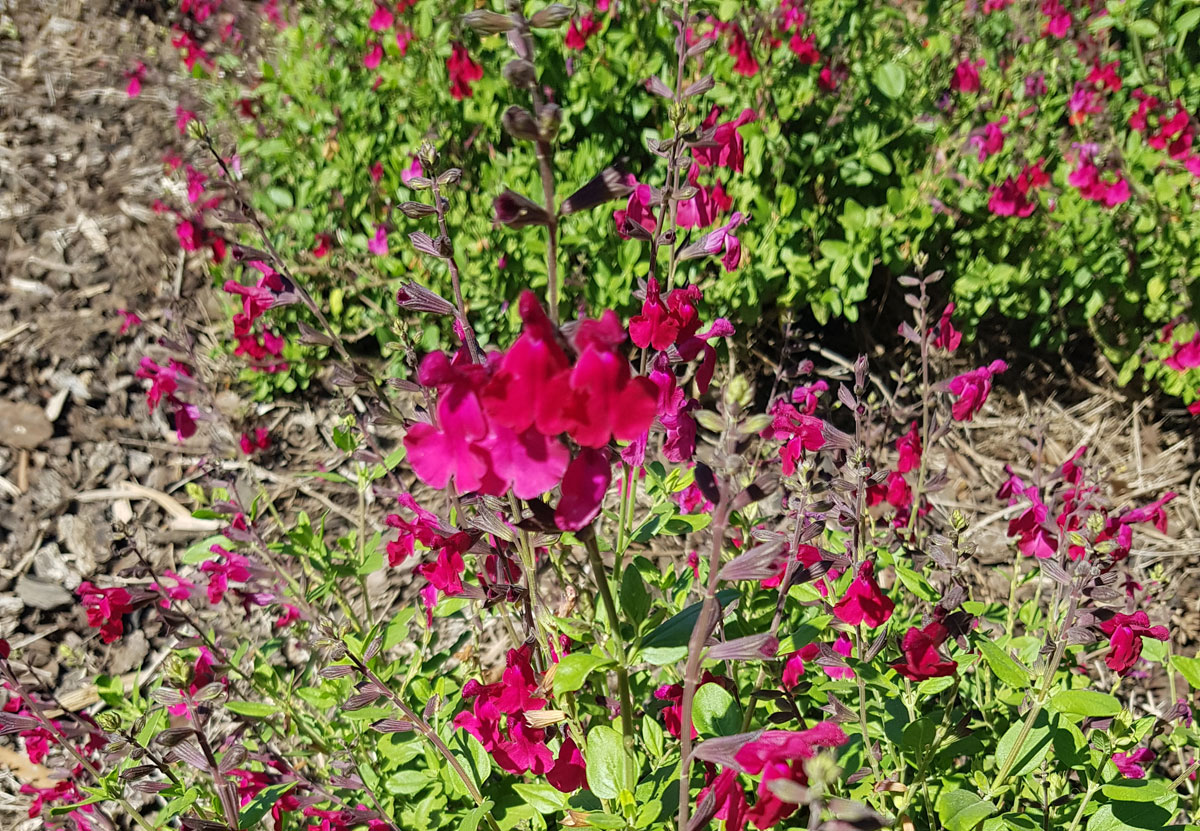 IMAGE: Salvia "Silas Dyson"
IMAGE: Salvia "Silas Dyson"
Salvia “Silas Dyson”
This Salvia is a variety developed from a cross between Salvia greggi and Salvia microphylla – natives of the south west states of the USA and Mexico. This variety has velvety deep purple buds which open to a crimson flower which then age to a pink red colour.
Here at #thegardenattheberkshires, they flower from early Summer to Autumn with spot flowering in between. It is a long flowering evergreen shrubby perennial. It can reach approximately 80cm x 60cm in height and width.
The plants tend to be quite compact in their growth. They will grow best in full sun with excellent drainage.
It is quite drought tolerant and copes well with frost up to about minus 5. It may lose its foliage in the coldest weather. I would normally cut the plants back or prune them to shape towards the end of winter /early spring. The nectar rich flowers are adored by pollinating insects.
Stay Connected
Subscribe
Get in Contact
Hilltops News to your inbox
Sign up now for the latest news from the Hilltops Area direct to your inbox.

